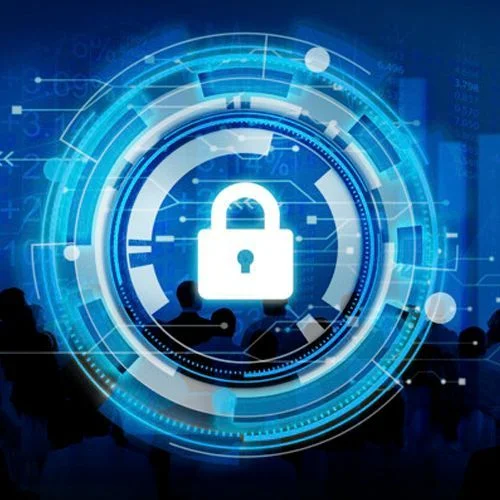Security automation is critical to keeping pace with today's fast-evolved threat environment, where manual processes are time-consuming, prone to human error, and lack visibility into potential threats.
An effective Security Automation platform should combine multiple detection methods, including signatures, unsupervised machine learning, user and entity behavior analytics, and deception technology, to reduce alert noise and let analysts focus on what matters.
Endpoint Scanning
Automating security processes is a cornerstone of modern cybersecurity solutions, providing faster incident response time and equipping security teams with the tools to keep pace with modern threats. Furthermore, automating routine tasks reduces human error risks and simplifies documenting security processes for compliance purposes.
To jump-start security automation efforts, security teams should identify their current manual security procedures and create a list of ways each could be automated. They should begin by prioritizing time-consuming or repetitive processes that would benefit most from automation; this will help them prioritize their efforts and create automated playbooks gradually.

Automating all processes at once may not be possible; starting by automating critical and high-value ones will allow teams to see immediate returns on investment while continuing to incorporate new security automation workflows.
Scanning endpoints to detect malware and other risks is integral to security automation. Still, manual execution of this task on multiple systems may prove challenging for IT professionals, particularly when confronted with multiple alerts that need triaging and investigating.
Automation allows these tasks to be completed more quickly and effectively, allowing more time for critical work by IT personnel.
Security automation solutions now offer multi-method approaches to malware prevention that go beyond antivirus scanners' limitations. Utilizing cloud-based threat analysis services for prevention against both known and unknown malware without signature reliance and sharing these preventive measures across an organization's entire infrastructure, modern security automation solutions allow organizations to stop infections before they affect business operations while at the same time ensuring all threats are identified and mitigated regardless of whether an attacker employs traditional or novel attack techniques.
Automating ticket creation, escalations, and incident resolution activities is one way to enhance security and response times, reducing the manual effort necessary to resolve incidents while increasing the consistency and accuracy of security alert investigation data. Furthermore, this will allow teams to close tickets more rapidly, freeing up IT resources for other priorities.
Threat Detection
Security automation tools can streamline threat detection by automatically inspecting log data and detecting anomalies. This helps reduce the mean time to detect (MTTD) and mean time to respond (MTTR) and improve the mean time to resolution - thus mitigating breach impacts more effectively.
However, even with all these advantages, it's still impossible to detect all threats. Human analysts can often become overwhelmed with security alerts, leading them to miss or ignore a third of incidents due to overwork. Automated threat detection helps reduce the number of alerts humans must review while prioritizing which incidents get reported to analysts.
Security automation can speed up incident response and remediation processes by altering access policy rules or quarantining devices. This helps decrease company breach risks and increase operational efficiencies, freeing up human staff for other important tasks.
Centralized security management allows IT professionals to view all their infrastructure's security metrics from one central dashboard, providing IT departments with greater insight into meeting reporting requirements while automating processes that previously required manual labor to keep up with the volume of work and ensure consistent standards are followed.
As cyber-attacks increase in frequency and sophistication, security teams must spend more time hunting down threats proactively. This has historically been accomplished using tools such as security information and event management (SIEM), network traffic analysis (NTA), or endpoint detection and response (EDR).
These technologies can detect threats in specific silos of an IT environment but are limited in providing contextual awareness and directly responding to an attack. Security automation tools like security orchestration, automation, and response (SOAR) were designed to ingest threat alerts and generate automated playbooks to stop attacks without human interaction; additionally, they prioritize alerts before escalating them for further analysis by human analysts.
Network Monitoring
Security automation tools monitor security-related data outputs from multiple tools and technologies across a company - logs and alerts generated from various tools or systems are typically monitored with this kind of tool - providing a consolidated view to more effectively assess security incidents as well as to comply with industry or legal standards. In addition, this solution helps ensure valuable information is recovered and simplifies certification maintenance - both of which are crucial elements in maintaining an organization's security posture.
Security automation aims to ease internal cybersecurity teams of unnecessary burdens to focus on more strategic tasks by decreasing manual, time-consuming processes that must be completed manually and increasing how fast security alerts can be addressed, investigated, and resolved.
Security automation needs differ depending on your organization, but one way of evaluating it is by tracking mean-time-to-detect and mean-time-to-remediate metrics. If your team constantly receives false positives, that could indicate that automation solutions might be necessary.
While many cybersecurity professionals may resist automating their work, security automation technologies are essential in helping teams perform more efficiently on the job. By having the appropriate tool in place, analysts can focus on more strategic tasks, which reduce risks while strengthening an organization's overall security posture.
Modern SOCs rely heavily on automated tools for threat detection and response. Ideally, these should integrate with existing tools to comprehensively view all security activity across their infrastructure. Automated tools can even be configured to triage security alerts automatically or quickly identify real incidents so playbooks can be deployed against threats or completely eradicated; closing tickets or notifying paging and on-call scheduling systems when human intervention is needed can happen autonomously!
Before undertaking security automation, set goals and prioritize use cases. This will assist with selecting vendors who fit your needs and developing workflow automation playbooks in the future. When searching for platforms offering security automation services, look for one with flexible APIs that support both languages spoken by your security team and those already used within workflows.
Integration
Security automation is an indispensable tool that can prevent cyberattacks and limit their effects. This process can speed up detection and investigation times and free up team resources so they can focus on more strategic tasks.
To maximize security automation's potential, it's critical to be familiar with its best practices for deployment and transition points when humans must step in with manual processes. Staying involved throughout will also ensure enterprise assets remain as safe as possible.
Security automation offers many advantages for businesses, with one of its primary goals being the reduction of human errors in processes. By automating manual tasks, employees no longer need to manually enter data or execute complex commands - eliminating costly manual data entry mistakes which can lead to data breaches, regulatory fines, and lawsuits for businesses.
Security automation offers another key benefit of increasing an organization's agility in a cybersecurity framework. Automating repetitive and monotonous tasks into automated workflows that can run automatically or on schedule or event trigger makes it easier for teams to stay up-to-date with threats while meeting regulatory compliance.
An effective security automation platform provides visibility across an organization's entire digital estate, enabling IT professionals to identify misconfigurations, identify critical vulnerabilities and mitigate threat exposure more rapidly than traditional tools that require manual effort to process and correlate alerts.
Security teams need the ability to access and analyze information from various sources, including security tools, telemetry data, and external intelligence feeds. Security orchestration platforms connect disparate tools through custom integrations or APIs - allowing more efficient ingest and processing.
Security teams often become inundated with alerts and desensitized to false positives, leading them to miss or disregard a third of all security incidents. Automation can help speed up threat detection by decreasing false positives and improving incident response by immediately activating playbooks in response to specific incidents.
